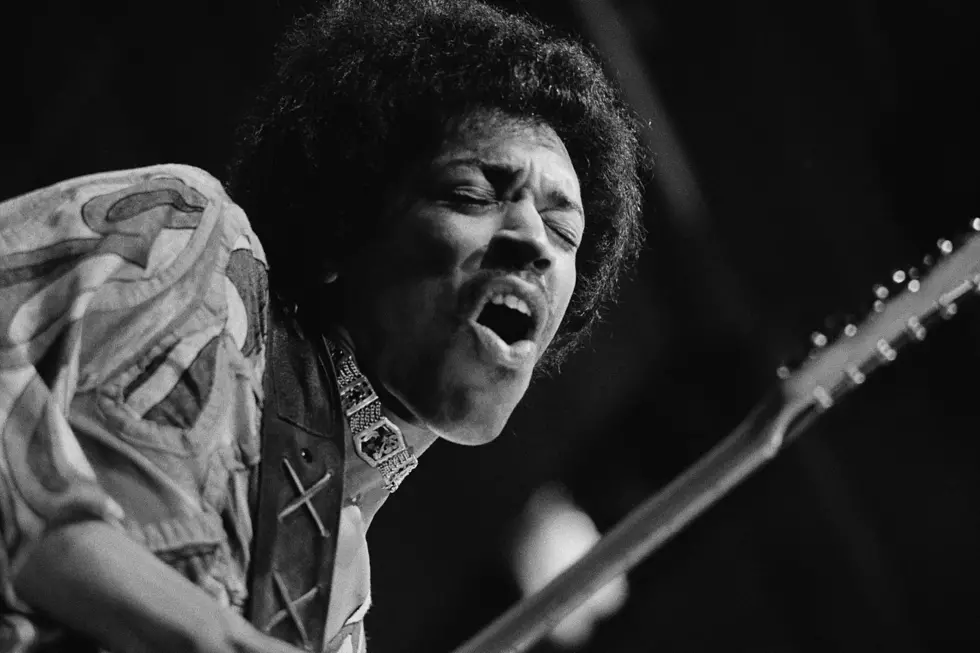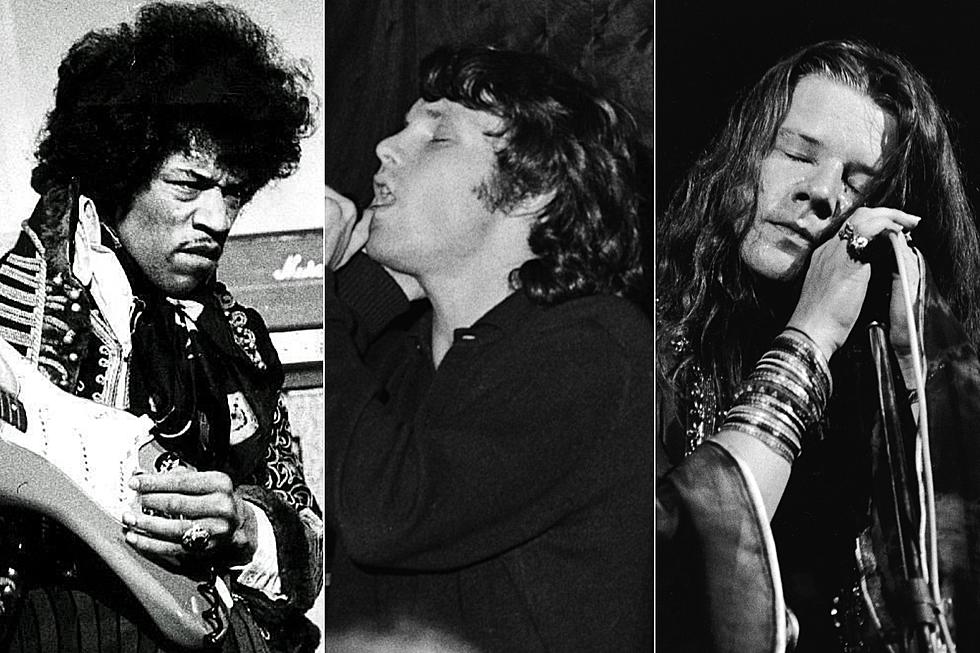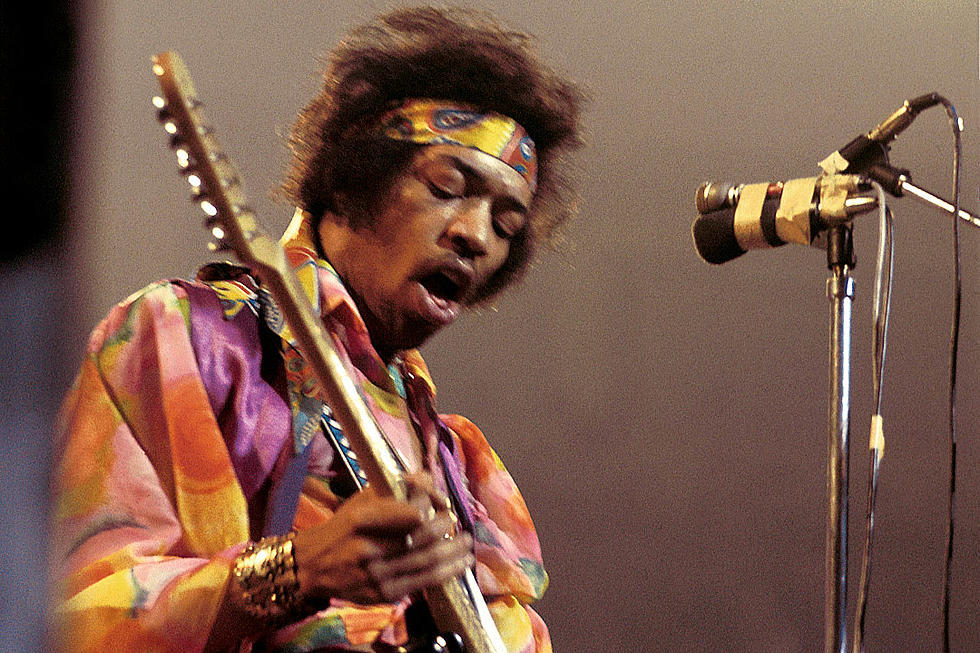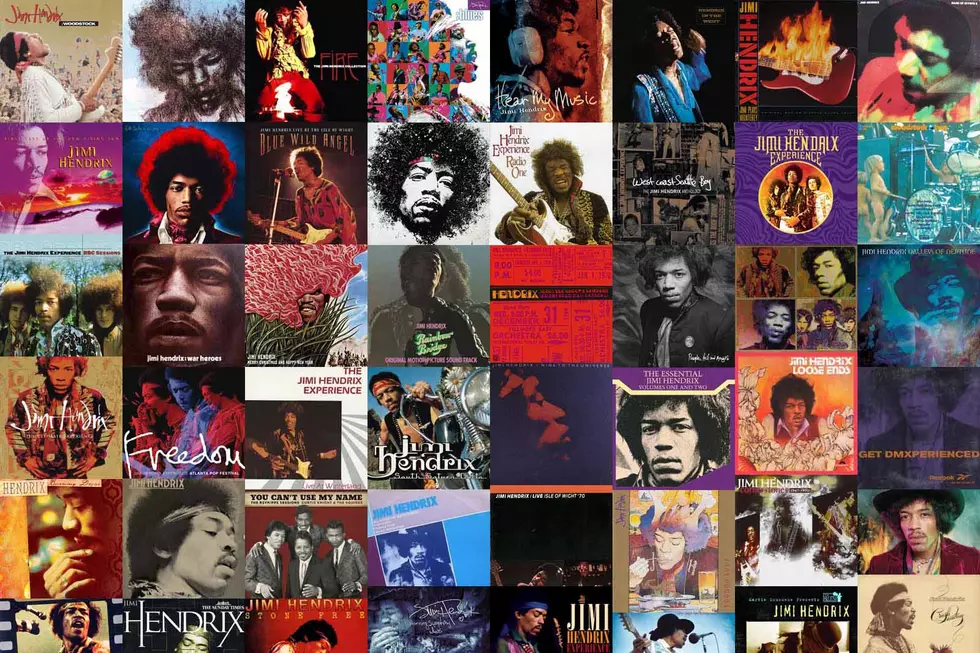
The Day Jimi Hendrix Died
Jimi Hendrix died on Sept. 18, 1970, just two days after his last live performance and nearly two weeks after his tumultuous final concert. It was a tragic end to a difficult chapter in the guitarist's life and career.
Hendrix was in a transitional period as the '60s concluded, having disbanded the Experience and retooled his live act several times. An expanded, percussion-heavy sextet played Woodstock in 1969, then a funky, scaled-back trio was documented on 1970's Band of Gypsys, the final album released during his lifetime.
In April 1970, the psych-rock pioneer launched what turned out to be his last trek, the Cry of Love Tour, with drummer Mitch Mitchell and bassist Billy Cox rounding out the group. The set list was varied and vibrant: classic Experience tracks, Band of Gypsys highlights and material Hendrix hoped to collect on a fourth studio album. But the jaunt, like Hendrix's life, was cut short.
After a stretch of dates in the U.S., the band ventured to the Isle of Wight Festival in England, followed by a run of European shows — including a notorious Sept. 2 date in Aarhus, Denmark, where the exhausted guitarist mustered only three songs before abruptly canceling.
"The moment I feel that I don't have anything more to give musically," Hendrix told Morgenposten for a now-ominous article that ran four days later. "That's when I won't be found on this planet, unless I have a wife and children, because if I don't have anything to communicate through my music, then there is nothing for me to live for. I'm not sure I will live to be 28 years old, but then again, so many beautiful things have happened to me in the last three years. The world owes me nothing."
The day that piece was published, Hendrix played an equally disastrous gig at the Open Air Love & Peace Festival in Fehmarn, Germany. He'd been scheduled for the previous night, but the event — already shaken by the violent presence of the Hells Angels motorcycle gang — experienced high winds and heavy rain, forcing Hendrix's team to postpone until the following afternoon. After walking onstage, he was pelted with audience boos, leading to an awkward exchange with the fans. The rain also picked back up, but Hendrix managed to push through the set.
With Cox battling illness, the rest of the tour was canceled. But Hendrix did play onstage one more time, on Sept. 16, sitting in with Eric Burdon's War at Ronnie Scott's Jazz Club in London.
Though many of the details vary, depending on the source, the guitarist reportedly spent most of the next day in the city with his girlfriend Monika Dannemann. They shopped, ran errands and enjoyed tea outside her apartment at the Samarkand Hotel.
Early the following morning, they attended a party where, according to some sources, Hendrix took an amphetamine tablet. And from this point, the details get even murkier. In his 1997 book, Jimi Hendrix: The Final Days, Tony Brown writes that Dannemann's account shifted over time.
In the most widely reported version of the story, the musician was battling insomnia and took some of her sleeping pills. In the morning, Dannemann found him unresponsive and called an ambulance. Hendrix, who'd choked on his own vomit, was pronounced dead at 12:45PM.
What we know for sure is that Hendrix's death created a yawning void in rock music — one that hasn't shrunk over the decades. He left behind a mountain of unfinished (though often stunning) music, some of which wound up on posthumous LPs like The Cry of Love and Rainbow Bridge. But it's impossible to predict how his creativity would have flourished over the decades, and it's a shame we never got to find out.
See Jimi Hendrix Among the Top 100 Albums of the '60s
More From Ultimate Classic Rock









